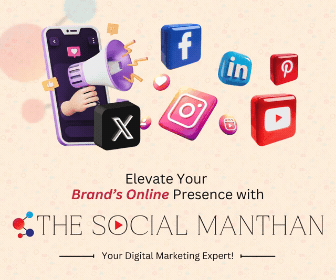Most brands are starting to notice the shift in influencer marketing, and it’s hard to ignore the rising popularity of micro-influencers. These content creators, often with smaller but highly engaged audiences, can be an excellent resource for your brand. I want to explore why partnering with micro-influencers could be a game-changer for your marketing strategy and how you can effectively leverage their influence to connect with your target audience. Let’s dive in and see if they might be the perfect fit for your branding needs!
Key Takeaways:
- Micro-influencers often have smaller but highly engaged audiences, which can lead to more authentic interactions and higher trust levels among their followers.
- Partnering with micro-influencers can be more cost-effective for brands, allowing for targeted marketing campaigns without the high costs associated with celebrity influencers.
- Brands can benefit from diverse content creation, as micro-influencers tend to bring unique perspectives and ideas that resonate with specific niche audiences.
The Appeal of Micro-Influencers: Why They Matter
Micro-influencers resonate with audiences in a way that larger influencers often can’t. Their smaller following—typically between 1,000 and 100,000—allows for deeper connections, making followers feel more like friends than faceless subscribers. This results in heightened trust and relatability, which ultimately enhances your brand’s visibility and loyalty. By tapping into this genuine engagement, brands can create campaigns that are not only effective but also authentic.
Authentic Engagement: Building Trust with Consumers
Engagement from micro-influencers tends to be more authentic, fostering a sense of trust among their followers. Because these influencers usually share personal stories and product experiences, their recommendations feel less like advertisements and more like honest advice from a friend. This kind of genuine interaction makes consumers more likely to heed their recommendations, leading to a more significant impact on purchasing decisions.
Niche Markets: Targeting Specific Audiences Effectively
Working with micro-influencers enables brands to target niche markets with precision. These influencers often focus on specific interests, such as sustainable fashion, health and wellness, or tech gadgets, attracting followers who are genuinely passionate about those topics. As a result, when a micro-influencer promotes your product, it reaches an audience that is already aligned with your brand values, leading to higher conversion rates.
Consider the example of a small eco-friendly skincare brand partnering with a micro-influencer who specializes in zero-waste living. The influencer’s dedicated followers, who prioritize sustainability, are more likely to respond positively to the promotion, resulting in increased brand awareness and trust. This strategy not only drives sales but also helps you position your brand within a specific market segment, enhancing your overall marketing efforts and ROI.
Measuring Success: The Metrics that Matter
Identifying the right metrics is imperative to truly understand the impact of working with micro-influencers. Unlike traditional influencers who may boast large follower counts, micro-influencers typically emphasize engagement and authenticity, which can lead to more meaningful brand connections. By focusing on metrics such as engagement rates, conversions, and customer feedback, you can get a better picture of how effective a micro-influencer partnership is for your brand.
Engagement Rates vs. Follower Counts
Engagement rates often tell a more compelling story than follower counts alone. While a micro-influencer may possess a smaller audience, their followers are typically more engaged, resulting in higher likes, comments, and shares. For instance, an influencer with 10,000 followers might achieve a 10% engagement rate, while a traditional influencer with 100,000 followers could be at only 2%. This difference highlights the enhanced connection micro-influencers have with their audiences.
Return on Investment: Understanding Long-Term Value
Analyzing return on investment (ROI) goes beyond immediate sales figures; it’s about assessing the long-term value micro-influencers bring to your brand. A strong campaign with a micro-influencer can consistently drive traffic and brand loyalty, creating a lasting relationship that results in repeated purchases. Tracking metrics related to customer lifetime value (CLV) and retention rates can help gauge the ongoing benefits of micro-influencer partnerships.
For instance, I worked with a micro-influencer who had a loyal following in a niche market. Over six months, we observed not just a spike in sales post-campaign but also an increase in repeat customers who mentioned discovering us through their content. By focusing on CLV, I realized that this influencer drove ongoing interest and brand loyalty, making them significantly more valuable over time than a one-off sale suggests. This kind of deeper relationship perspective can help inform future marketing strategies and investments in influencer partnerships.
Harnessing the Power: Practical Strategies for Brands
To effectively leverage micro-influencers for your brand, I recommend adopting targeted strategies that seamlessly blend with your marketing efforts. Start by integrating micro-influencers into your campaigns as key collaborators who can amplify your messages in a natural and relatable way. Engaging with them on social media, participating in partnerships, and fostering long-term relationships can all contribute to building credibility and enhancing your brand’s visibility.
Finding the Right Micro-Influencers for Your Brand
Identifying micro-influencers aligned with your brand’s values and target audience is the first step towards successful collaboration. Tools like social media analytics platforms can help you gauge engagement levels and the authenticity of their connections. I often look for influencers whose content reflects a genuine understanding of your product or service, as this ensures their endorsements will resonate with their followers.
Crafting Authentic Collaborations that Resonate
Authenticity is key when collaborating with micro-influencers. Tailoring campaigns that allow them to express their genuine experiences with your brand fosters trust among their followers. I’ve found that providing them with creative freedom to showcase your offerings leads to more engaging and relatable content, which ultimately drives better results. Highlighting their unique perspectives not only enhances the collaboration but makes your brand story more compelling and relatable.
By encouraging micro-influencers to share their personal narratives and authentic interactions with your product, you tap into a powerful storytelling mechanism. For instance, consider inviting them to a unique brand event or offering exclusive access to a new product launch, which can generate organic excitement. Their followers are drawn to their genuine, unfiltered reviews, boosting your brand’s credibility and reach. This approach not only nurtures a sense of community but also directly contributes to long-term brand loyalty among their audience.
The Potential Pitfalls: What to Watch Out For
While partnering with micro-influencers can yield impressive results, several pitfalls demand attention. Understanding these challenges is necessary to safeguard your brand’s reputation and ensure a successful campaign. From audience fatigue due to over-saturation to misaligned partnerships, being aware of these factors will help you navigate the landscape of micro-influencer marketing effectively.
Over-Saturation and Audience Fatigue
Frequent partnerships with micro-influencers can lead to audience fatigue, where followers become overwhelmed by repetitive content. If they continually see similar promotions, they may disengage entirely. I’ve observed that successful influencers maintain their authenticity by diversifying the brands they collaborate with and limiting the number of sponsored posts, ensuring their audience remains interested and engaged.
The Risk of Inauthentic Partnerships: When Micro-Influencers Miss the Mark
Sometimes, micro-influencers can unintentionally misrepresent a brand, leading to inauthentic partnerships. If the influencer’s audience perceives a disconnect between their personal brand and the products they promote, it can damage credibility. Brands should conduct thorough research to ensure the influencer aligns with their values and represents the product genuinely. Engaging with influencers who truly believe in your product enhances authenticity, fostering trust and connection among their followers.
If I were to encourage you to take a closer look, I’d stress the value of genuine storytelling. For instance, one micro-influencer I worked with authentically integrated a wellness product into her daily routine, sharing personal anecdotes that resonated deeply with her followers. However, if an influencer simply promotes a product without personal experience or alignment, it can lead to skepticism. Therefore, ensuring that the influencer’s values align with your brand is not just about aesthetics — it’s about creating a steadfast, authentic relationship that resonates with their audience.
The Future of Influencer Marketing: Trends on the Horizon
The Evolving Landscape: Shifts in Consumer Behavior
As consumers become increasingly discerning, their behavior continues to shift towards authenticity and transparency. Many now prefer interacting with influencers who genuinely represent their values, leading to a rise in demand for relatable content. Brands that align their messaging with the interests and lifestyles of these audiences can cultivate stronger connections, ultimately driving loyalty and engagement.
Technology’s Role: Innovations Shaping Influencer Partnerships
Technology is transforming how brands identify and engage with influencers. Advanced analytics and AI-driven tools allow for more precise targeting, ensuring that collaborations are more effective and measurable than ever before. Additionally, platforms now offer sophisticated ways to track campaign performance, increasing transparency and return on investment.
Artificial intelligence and machine learning are becoming pivotal in the influencer marketing ecosystem. For instance, AI algorithms can analyze engagement metrics and historical performance to recommend the best micro-influencers tailored to your brand’s audience. Beyond selection, new tools are emerging for content co-creation, simplifying collaboration and helping brands maintain a cohesive message across their campaigns. As these technologies evolve, the partnerships between brands and influencers will not only be more efficient but also more impactful. Investing in these innovations now positions you to leverage the full potential of the influencer marketing landscape of the future.
To wrap up
So, as I look at the growing influence of micro-influencers, I see a fantastic opportunity for your brand. Engaging with them can foster genuine connections and boost your reach in a more authentic way. If you’re considering this route, take the time to find influencers who resonate with your values and audience. It’s about building relationships that matter. Dive into this trend, and you might just find the perfect partners to elevate your brand!
FAQ
Q: What are micro-influencers and how do they differ from traditional influencers?
A: Micro-influencers are social media personalities with a smaller following, typically ranging from 1,000 to 100,000 followers. Unlike traditional influencers, who often have millions of followers and collaborate with larger brands, micro-influencers tend to have a more niche audience and higher engagement rates. Their followers often view them as relatable and authentic, which can lead to stronger connections and trust. This authenticity allows micro-influencers to effectively promote a brand in ways that resonate more deeply with their audience.
Q: What are the benefits of partnering with micro-influencers for my brand?
A: Partnering with micro-influencers offers several advantages for brands. Firstly, their smaller audience often leads to higher engagement rates, as followers feel more connected to them. This can result in better conversion rates for promotions and campaigns. Secondly, micro-influencers are generally more cost-effective than traditional influencers, making them accessible for brands with limited budgets. Additionally, they often have a strong presence in specific niches, allowing brands to target audiences more precisely. This makes micro-influencers an appealing option for brands looking to increase their visibility and reach within particular communities.
Q: How can I find the right micro-influencers for my brand?
A: To find the right micro-influencers, start by identifying the characteristics of your target audience and the niche you want to focus on. Use social media platforms to search for relevant hashtags and keywords related to your industry, which can help you discover potential influencers. Tools like Instagram’s search feature, influencer marketing platforms, or even analytics tools can assist in narrowing down your choices based on engagement rates and follower demographics. Once you’ve compiled a list of candidates, evaluate their content, audience interaction, and past collaborations to ensure they align with your brand’s values and messaging.




